Ashwath has continued his family’s generational profession. He has been working at the Vyalikaval Dhobi Ghat for nearly 30 years, and his day begins as early as 5 am.
He starts work by separating the clothes into two piles: one for manual washing and the other for machine washing.
Four dry cleaners give Ashwath clothes to wash. “While towels and bedsheets can be washed in the machine, expensive clothes like sarees and dresses are given to us for washing. We do face a few health issues since we work a lot in water, but we are used to it,” says Ashwath.
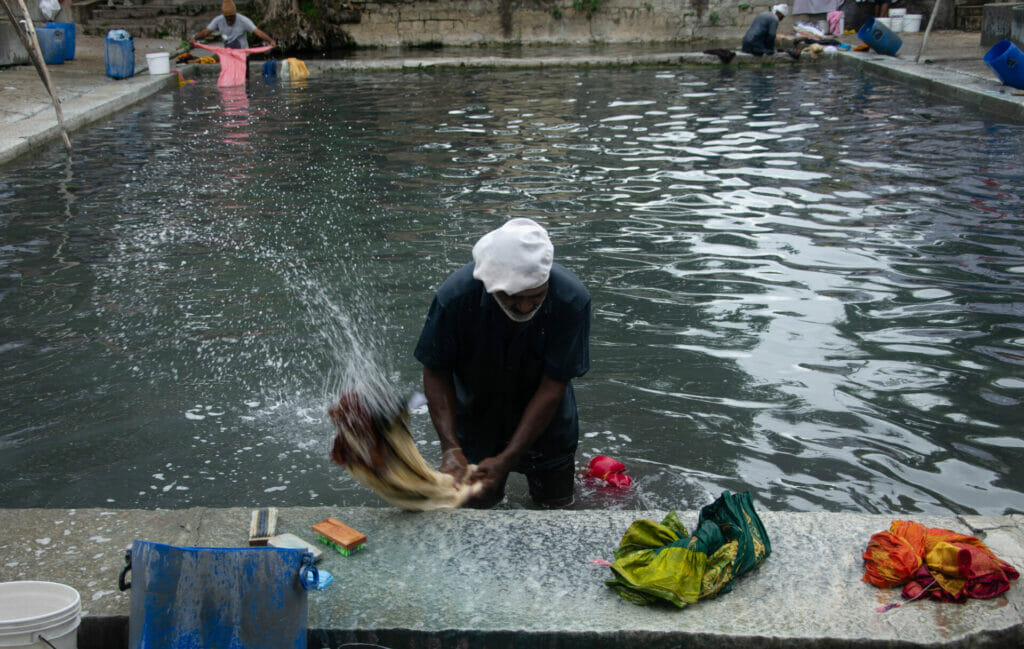
‘Our livelihood will continue’
The Vyalikaval Dhobi Ghat Association has about 150 members. It is the oldest dhobi ghat in the city that has been around for more than 50 years. The members take pride in their profession and in keeping their clients satisfied. “No matter how advanced the technology is, clothes will always need to be washed with special care for it to be well maintained. And since we live up to that expectation, we have been able to sustain our livelihood and will continue to do so,” says Puttaraju, Secretary at Vyalikaval Dhobi Ghat.
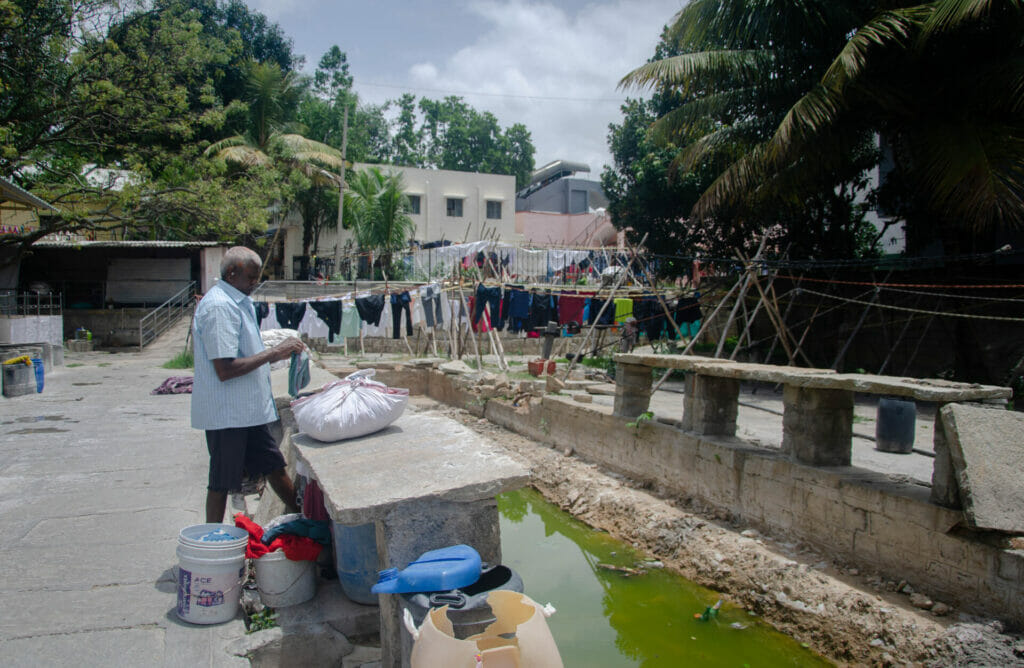
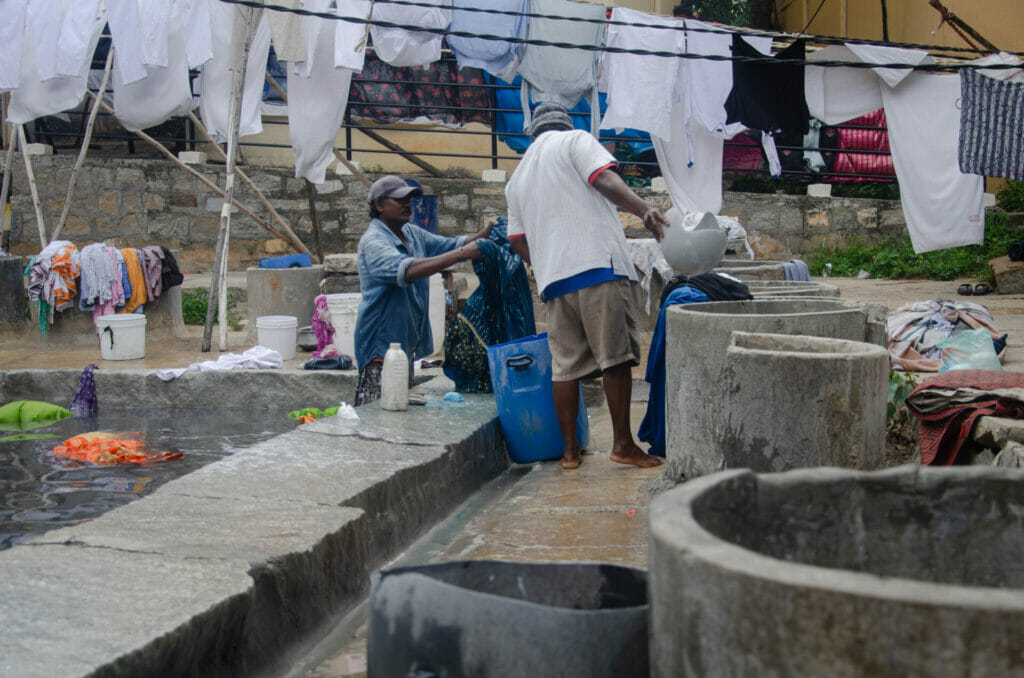
Machines in dhobi ghats
Dhobi ghats are now equipped with large washing machines, dryers and boilers, which have reduced the dhobis’ workload. “Earlier, we had to do all the washing manually, which was quite strenuous, and would irritate the skin because of corrosive chemicals in the detergent as well as having to stand for long periods of time in the water. But with the introduction of machines, our workload has reduced and our health has got better,” says Siddharaju, cashier and worker at Vyalikaval Dhobi Ghat, who has been born and brought up in the dhobi ghat.
Read more: As Chennai, Bengaluru grapple with water shortage, time to consider a compact with Cauvery
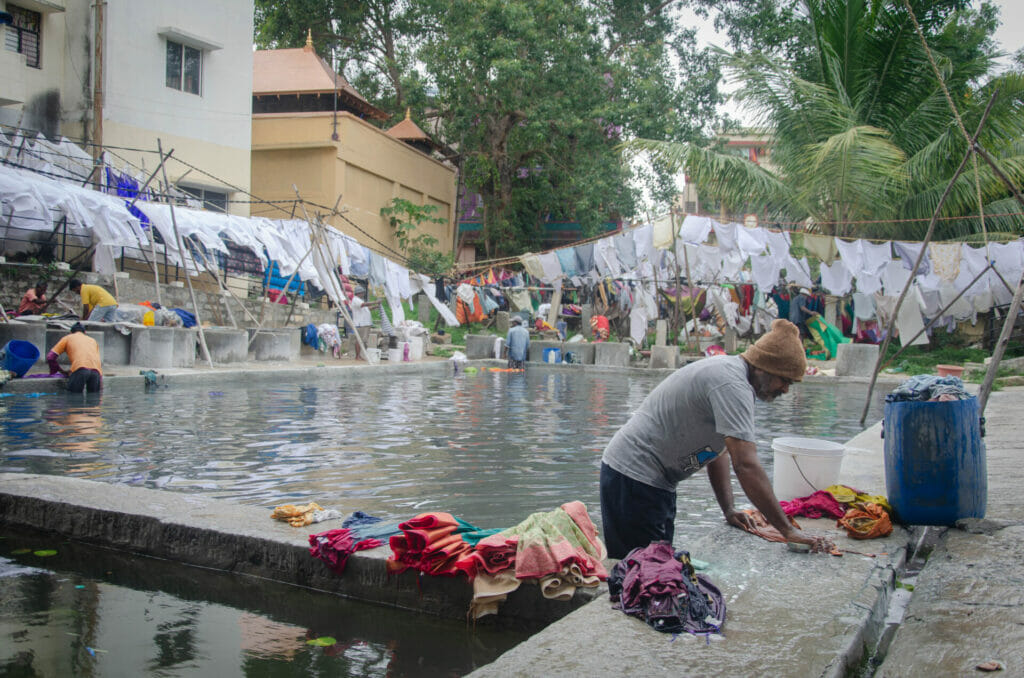
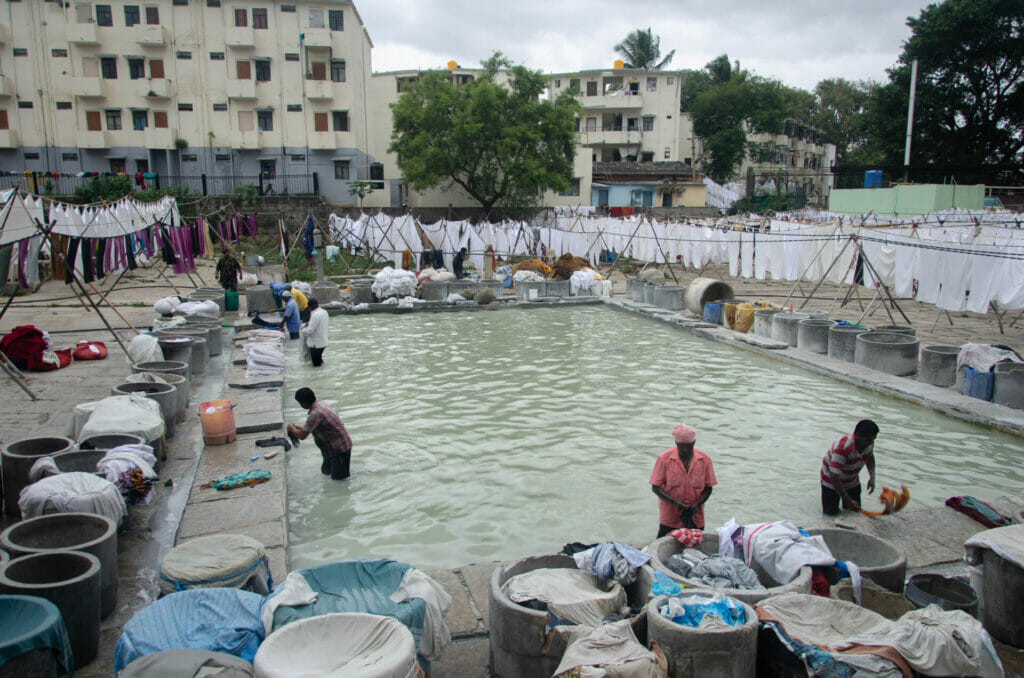
Most dhobi ghats get their water supply from borewells. In case of deficit, they buy tank water. “We pump water from about three to four borewells. We do face some water scarcity, but we manage somehow,” says Puttaraju.
Due to an increase in washing machines, household clothes at dhobi ghats have reduced. However, clothes from hospitals, restaurants and hotels are washed here, in addition to clothes given by private dry cleaners, some are even owned by the members of dhobi ghat associations. “Even if they are small shops, it is used for ironing, washing, dry cleaning in the locality, so that they could earn some profit in this business,” says Ramesh Raj, president of Mahalakshmi Dhobi Ghat (next to Iskon temple).
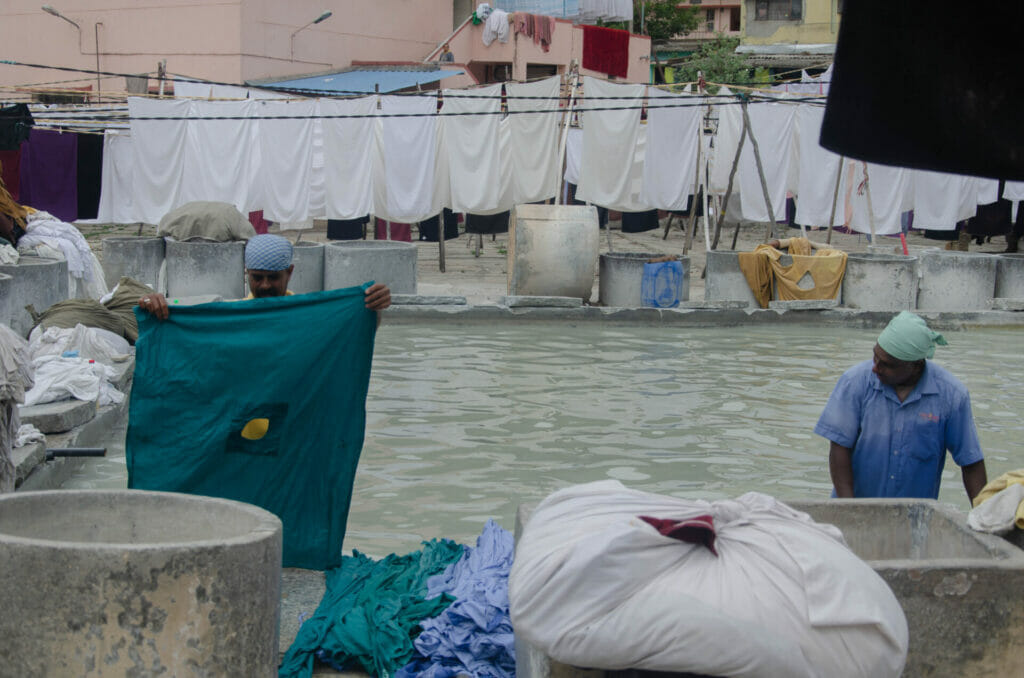
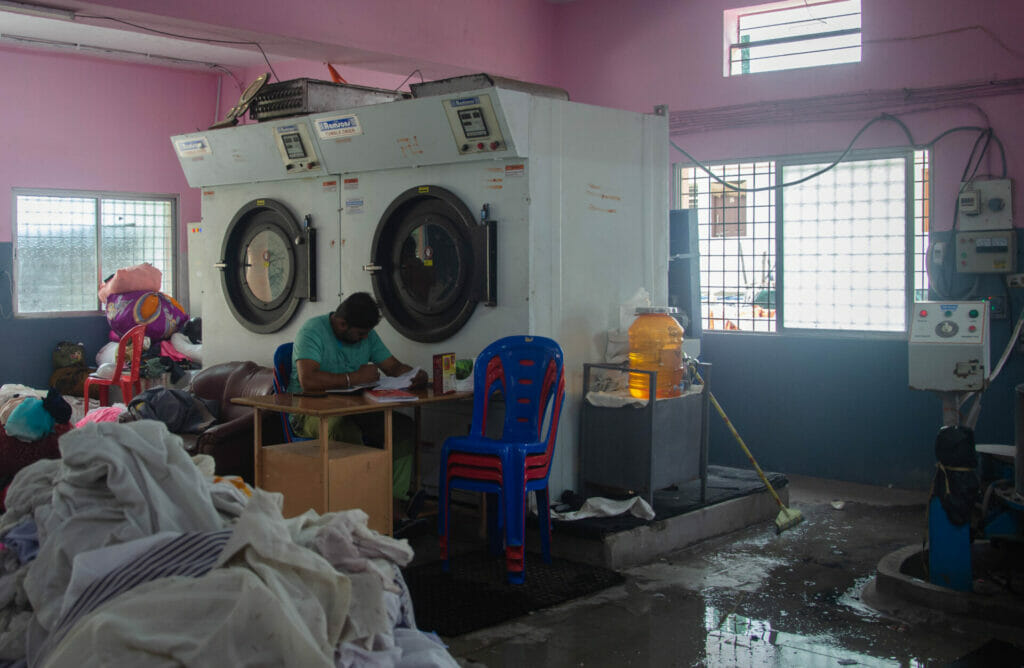
Government’s contributions
BBMP oversees the functioning of dhobi ghats through the locals MLAs, and other authorities like the Karnataka Slum Development Board. “All the machinery has been given to us by BBMP and it has been running well for nearly 13 years now,” says Puttaraju. “We ask the BBMP for help for maintaining the machines, and they are responsive to our requests,” says Ramesh.
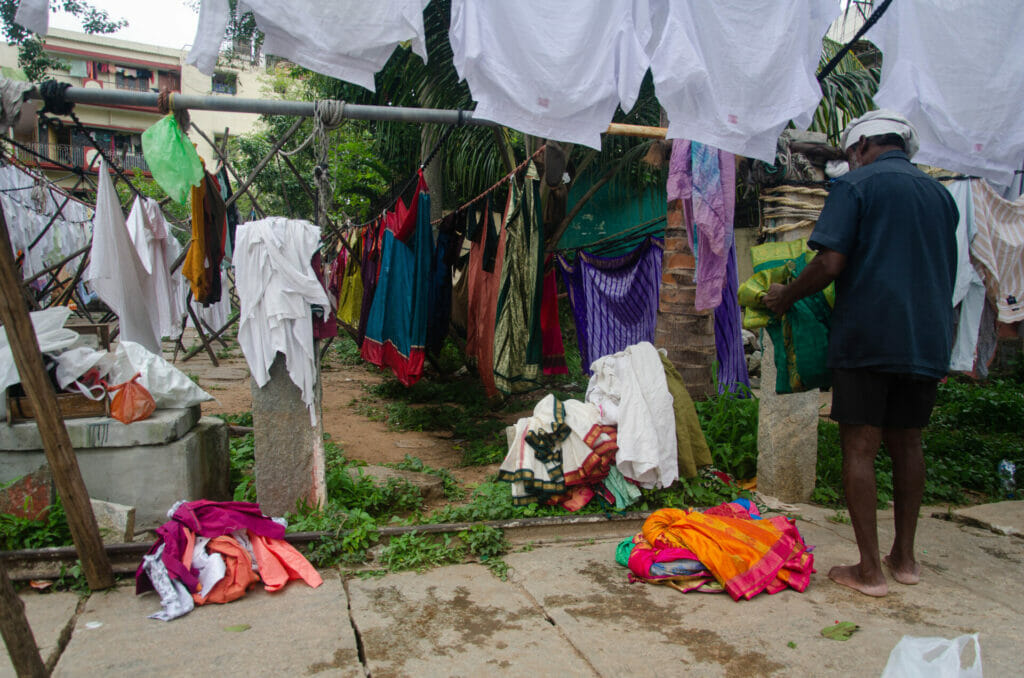
All dhobi ghats have in-built quarters for the members of the associations, set up by the Slum Board and BBMP. “We have about 200 members in our association, and we have houses built for us within the premises by the government,” says Ramesh. In some quarters, there are houses given to even those outside the dhobi ghat associations, such as the owners of small private dry cleaners in the vicinity.
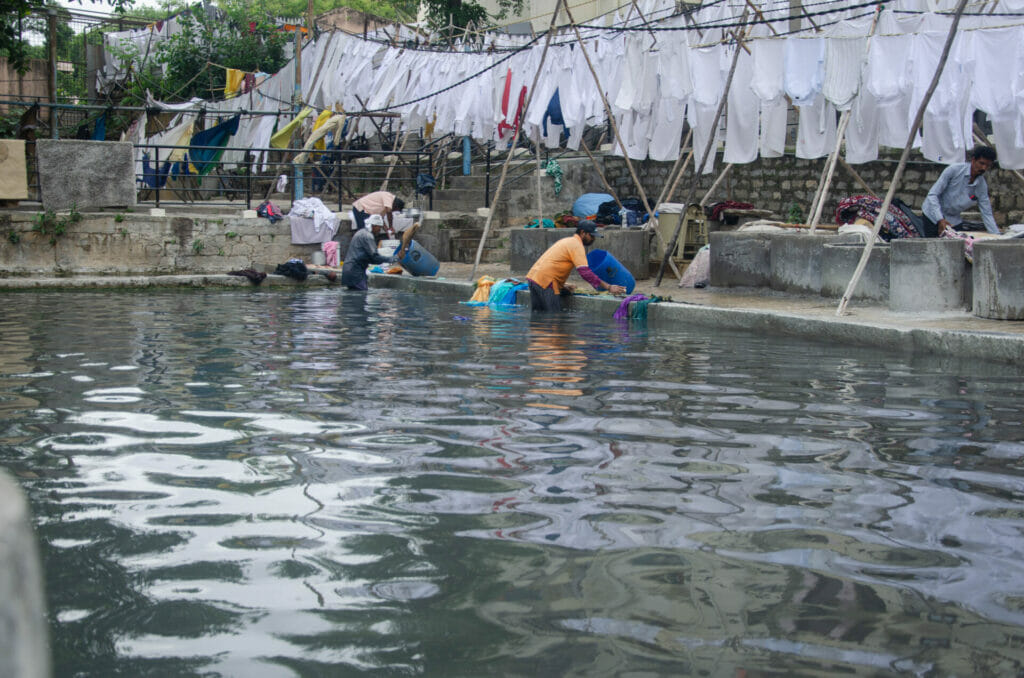
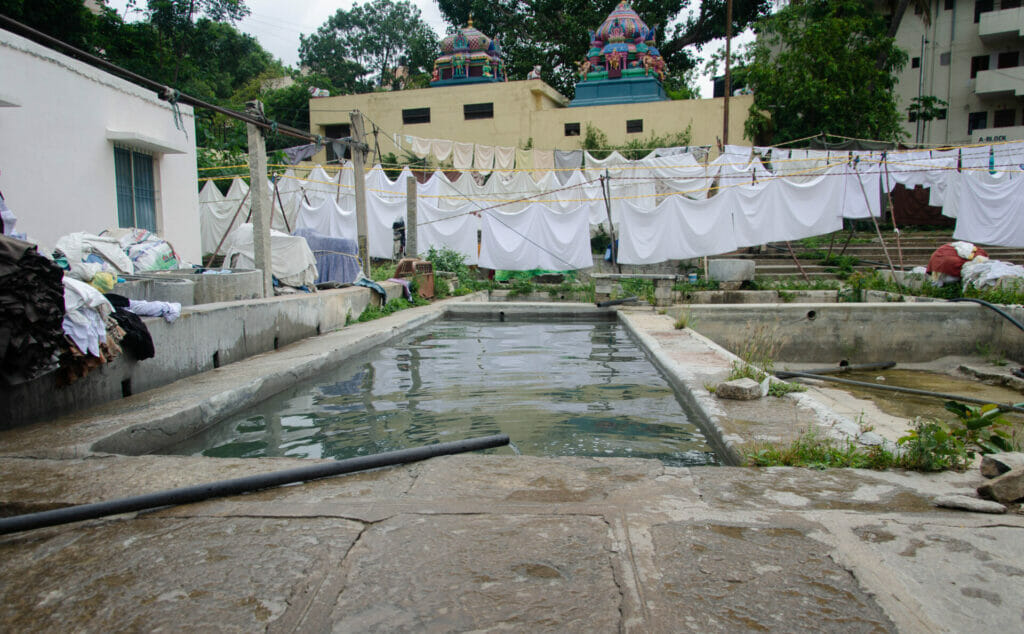
“We have requested BBMP for additional borewells and sheds. They have always met our demands without much delay,” says Muniraju, executive member of Malleshwaram Dhobi Ghat Association. “There is as many as 1,000+ votes that can be won from our quarters and the local MLAs have been kind with most of our requests so far,” says another worker, who requested anonymity.
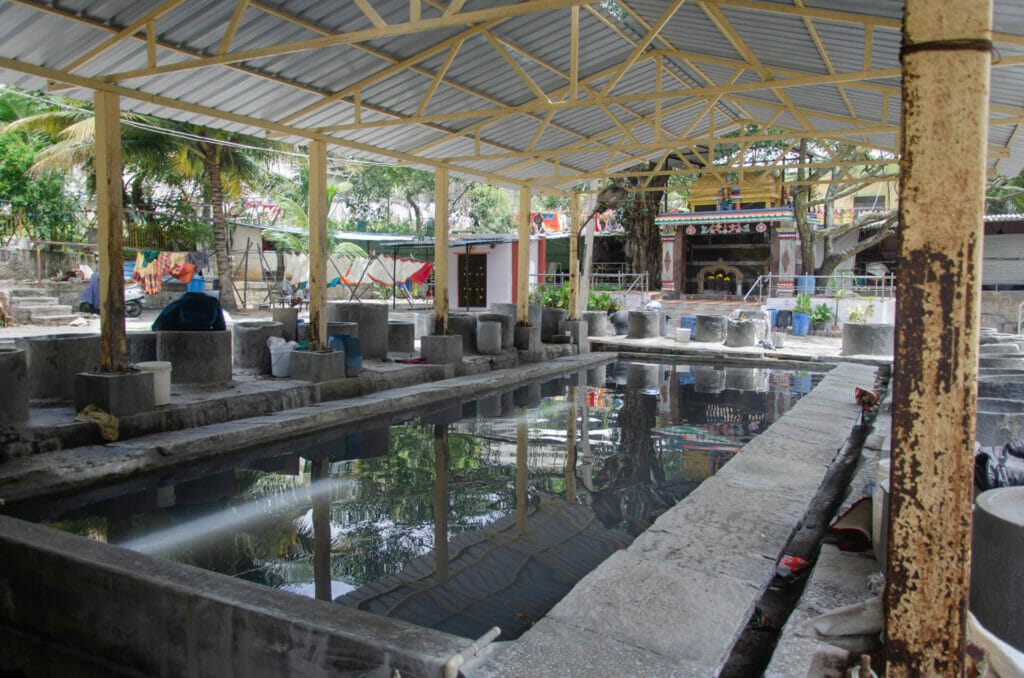
Better facilities required
There are about 30 dhobi ghats in the city. The numbers have dwindled over the years due to the city’s development. But the industry will continue to stay for two reasons: Firstly, for its traditional value and secondly, for its sizeable vote bank. Although these are good reasons to develop dhobi ghats, little progress has been seen.
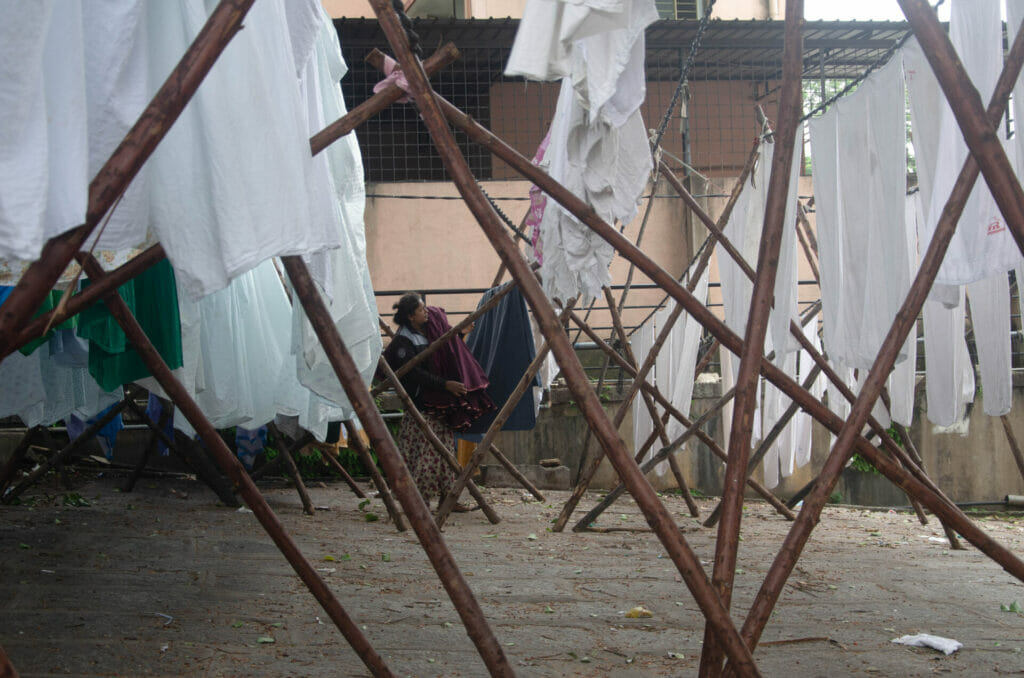
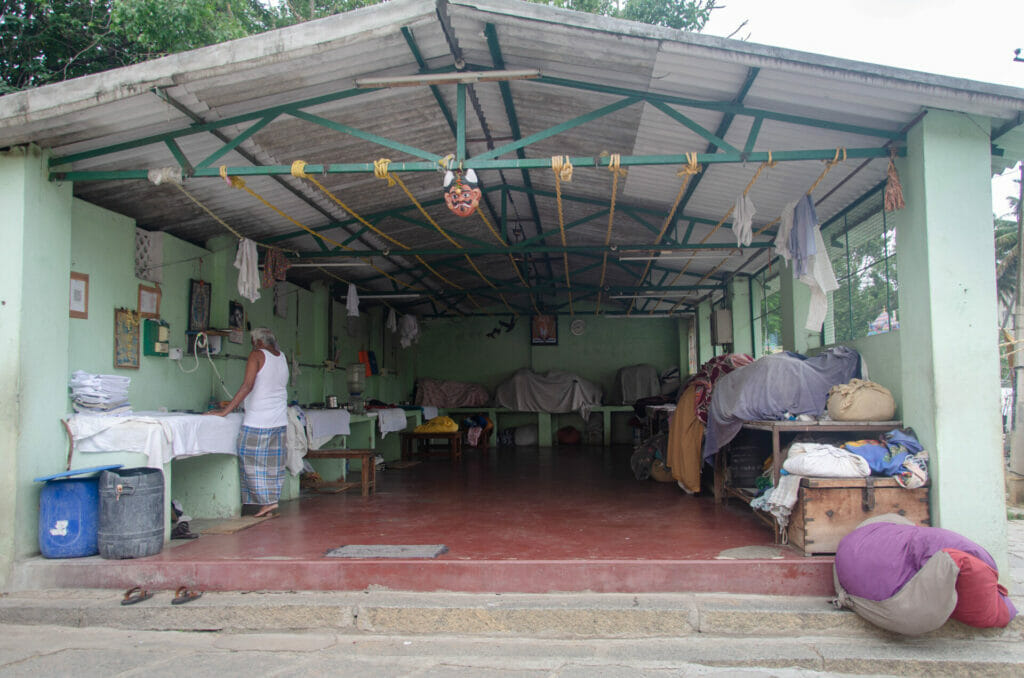
Water filled with chemicals from detergents released into drains
Ramesh says that about 50,000 gallons of water is required each day, both for manual washing and machines.
Dhobi ghats use large quantities of water mixed with detergent. All of it is currently being released into the nearby drains, which raises environmental concerns. “We had a water treatment plant. But it stopped working. So, at the moment we are releasing all water into the drains,” says Muniraju. “We filter out the top of the water and use them to water the trees in our ghat, and the rest of the water, we release into the drains,” says Ramesh.
However, the question is about the advisability of using this lightly filtered water for trees. Currently, all used water from the dhobi ghats is being treated in similar ways. “On the days we face water scarcity, it would be helpful to have recycling plants, since our main resource in this business is water,” says Muniraju. He adds that they have also requested for additional borewells and sheds for the ghat, but these are yet to be approved by the government.
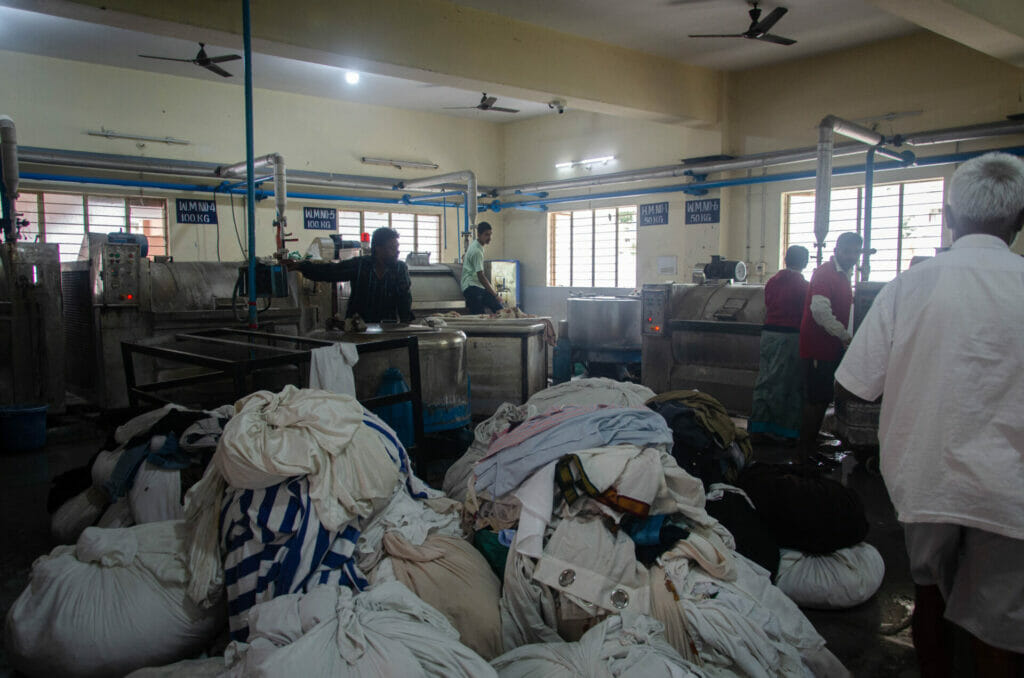
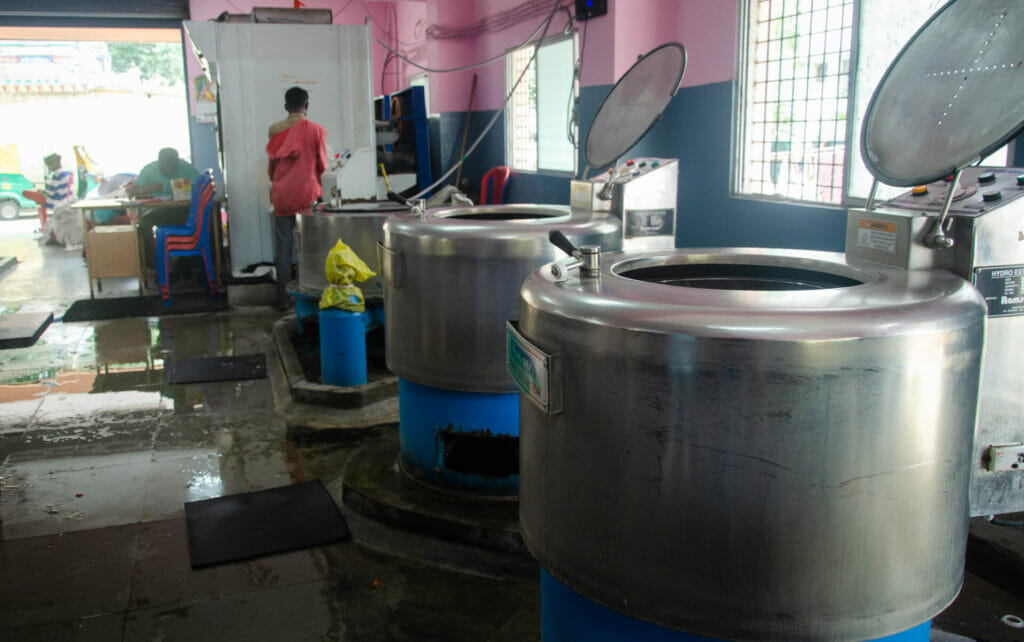
Ramesh gives an estimate of about 3,000 clothes that are brought in everyday for washing, in addition to those from restaurants and hospitals. “It’s the livelihood my father relied on and now I am depending on it to make my children’s lives better. I only hope they don’t have to go through any of these hardships like I do,” says one of the workers at Rajajinagar Dhobi Ghat, who requested anonymity.
Though many workers at dhobi ghats believe that with education their children would not have to work as hard as they do, the heritage of dhobi ghats can only be taken forward by making their livelihoods a little less hard to sustain.
